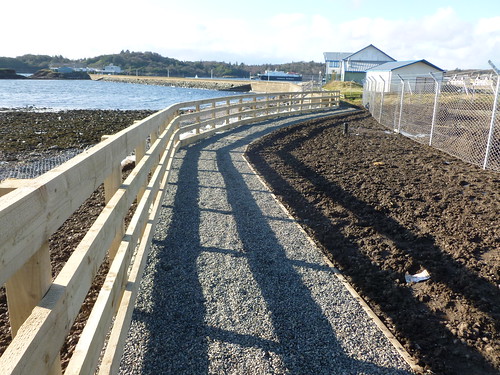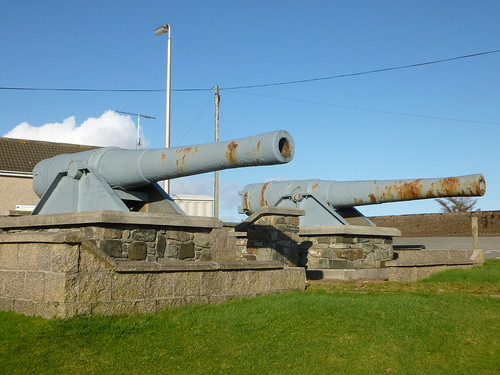To my delight, I found that my regular short walk round the powerstation has reopened following months of closure due to soil cleaning work. Four years ago, several fuel storage tanks were removed outside the powerstation, and the fuel had leaked into the ground. This necessitated a huge clear-up, which continues today.

The walk takes me round to the Battery.

And yes, those are two ships' cannon. They mark the spot where the Royal Naval Reserve had a base during WW1, and it was near there that the bodies of the sailors who drowned in the Iolaire Disaster of 1 January 1919 were brought ashore. The total number of casualties was 205, but 60 of those lost were never found.
I continued to look at details of several Stornoway men who were lost during WW1 - you can follow progress here. I have researched 124 (not claiming to be supplying complete information by a long shot), and still have about 1170 to go. I completed the transcription of evidence given to the Napier Commission at Inverness, From the county of Inverness, I have the evidence from Kingussie left to transcribe. Otherwise, there is the sessions in Argyll, Lanark and Edinburgh. And I have also continued to transcribe the evidence from the Dewar Report at Stornoway. I copy interesting bits onto my local history blog Pentland Road. The Dewar Report was published 100 years ago this year and led to a revolution in healthcare in Scotland.